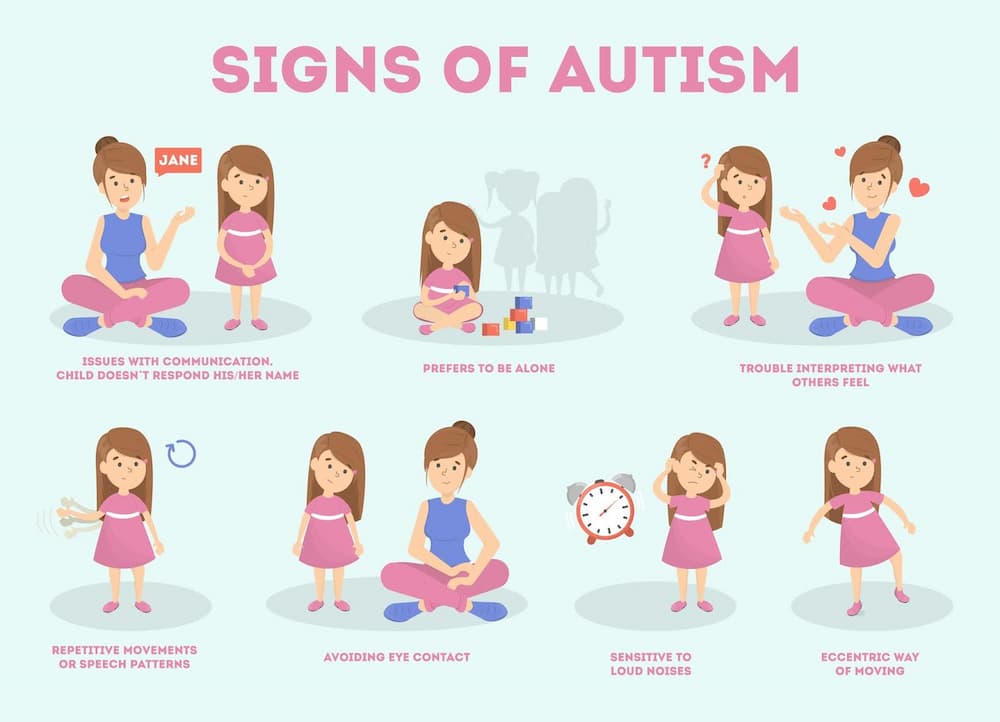Daily life hacks that Autism Spectrum Therapies recommend
Daily life hacks that Autism Spectrum Therapies recommend
Blog Article
Comprehending the Impact of Behavioral Autism on Day-to-day Live and Social Communications
You may not recognize how deeply behavior autism affects day-to-day life and social communications. Individuals on the spectrum usually browse a globe loaded with interaction hurdles and sensory overload. These obstacles can lead to frustration and seclusion, influencing their relationships and general well-being.
Specifying Behavioral Autism and Its Features
Behavioral autism, typically referred to as autism spectrum problem (ASD), includes a variety of conditions identified by challenges in social interaction, communication, and recurring behaviors. You could observe that individuals with ASD often battle to translate social cues, which can cause misconceptions in discussions. They may find it hard to establish eye contact or involve in small talk, making social scenarios feel frustrating.
Communication difficulties can manifest in various methods, from delayed speech advancement to a preference for utilizing fewer words. By acknowledging these attributes, you can cultivate a setting that advertises approval and motivates efficient interaction, assisting individuals with autism prosper in their everyday interactions.
The Spectrum of Autism: Understanding Irregularity in Actions
Autism spectrum problem (ASD) isn't a one-size-fits-all medical diagnosis; it differs widely amongst individuals. You might experience people that are extremely verbal and engage conveniently in discussions, while others may like singular activities or connect non-verbally.
In addition, the way individuals with ASD react to sensory input can vary greatly; some might be bewildered by intense lights or loud noises, whereas others thrive in boosting atmospheres. The range also consists of differences in social communications; some individuals might have a hard time to interpret social signs, while others navigate social settings with relative convenience. Comprehending this variability is necessary, as it assists you appreciate each person's unique experience and dressmaker assistance to their particular demands, promoting an extra inclusive atmosphere for every person.
Communication Difficulties Encountered by People With Autism
When you communicate with people on the autism spectrum, you might observe their unique interaction difficulties. They frequently deal with troubles with both nonverbal and verbal hints, which can influence their social interactions. Understanding these obstacles is crucial for promoting far better links and assistance.

Verbal Communication Problems
Numerous people on the autism range experience verbal communication problems that can significantly impact their daily interactions. Your speed, tone, or volume could not line up with social assumptions, triggering others to misinterpret your intentions. Identifying these obstacles can help you and your support network create approaches to enhance interaction and promote far better connections with others in your day-to-day life.
Nonverbal Interaction Obstacles
Spoken interaction isn't the only obstacle individuals on the autism range face; nonverbal communication obstacles can be equally as significant. You may locate it tough to interpret body language, face expressions, and eye get in touch with, which are essential for reliable interaction. These difficulties can result in misunderstandings or misconceptions of social hints, making communications really feel complex or frustrating. You might struggle to share your own feelings through nonverbal means, leaving others unsure of your objectives or sensations. This detach can produce feelings of seclusion and frustration. Recognizing these barriers is important for cultivating understanding and compassion in your interactions. By addressing nonverbal communication, you can locate strategies to enhance your social experiences and boost your total lifestyle.
Social Interaction Influences
Social communications can typically feel frustrating because of the distinct interaction difficulties dealt with by people with autism. You may struggle with translating social cues, making it difficult to comprehend sarcasm or body language. This can result in misunderstandings or uncomfortable minutes in discussions. Additionally, starting and keeping discussions may feel difficult, creating stress and anxiety in social situations. You might choose organized settings, making spontaneous interactions awkward. It's likewise common to experience trouble in engaging in small talk, which can prevent forming brand-new relationships. Acknowledging these difficulties can help you locate methods to boost interaction, such as practicing social skills in safe settings or utilizing visual aids - Aba Therapist. Understanding your needs enables you to navigate social interactions with greater self-confidence and simplicity.
Social Communication and Relationship Building in Autism
While structure connections can be testing for people with autism, recognizing their one-of-a-kind point of views and communication styles can cultivate significant links. You may see my sources that several people on the spectrum choose direct communication and may battle with social cues or small talk. By being straightforward in your communications, you can help produce an environment where they feel comfortable.
Engaging in shared rate of interests can additionally serve as a bridge to deeper connections. Whether it's a leisure activity, a favored show, or a shared interest, these usual strings can open doors to friendship.
Every Day Life Routine: Navigating Difficulties and Approaches
Maneuvering day-to-day life regimens can be specifically testing for people with autism, particularly when unexpected adjustments take place. You could discover convenience in having an organized schedule, as it assists you expect what's next. When disturbances happen, it's typical to really feel nervous or overloaded. To navigate these challenges, consider implementing visual schedules or checklists. These devices can offer clearness and confidence.
Developing a regimen that consists of sensory breaks can additionally be useful. You can prepare time-outs throughout your day to charge. It's necessary to communicate with those around you, letting them recognize your demands and preferences. This assists produce an understanding environment.
Finally, practice mindfulness techniques to take care of stress and stress and anxiety. Simple breathing exercises or basing methods can make a significant difference. By integrating these strategies, you can boost your daily routine and reduce disruptions, making life feel extra workable.
Staminas and Capabilities of Individuals on the Autism Spectrum
Recognizing daily life visit this site routines is simply one facet of the autism experience. Lots of people on the autism spectrum have amazing toughness and abilities that set them apart.
Additionally, your memory abilities commonly radiate, specifically in areas of interest. Aba Therapist. This propensity for retaining information can make you an important source in fields like art, science, or innovation. You might also exhibit strong aesthetic reasoning, enabling you to imagine complicated concepts and fix troubles creatively
In addition, your one-of-a-kind viewpoint on the globe can promote compassion and understanding in others, enhancing social communications. Welcoming these staminas not only enhances your self-confidence but also helps others value the varied abilities you give the table.
Creating Comprehensive Settings for Individuals With Autism
Developing inclusive settings for people with autism starts with developing sensory-friendly areas that satisfy their distinct demands. You can likewise foster opportunities for social communication, helping to build friendships and connections. By making these changes, you'll add to a much more welcoming environment for everyone.
Creating Sensory-Friendly Spaces
While making sensory-friendly rooms, it's vital to mirror on the one-of-a-kind requirements of people with autism. Include silent areas where individuals can recharge and pull away when bewildered. Consist of visual timetables or clear signage to assist individuals browse the space confidently.
Advertising Social Interaction Opportunities
Designing sensory-friendly spaces not only addresses individual convenience but additionally establishes the stage for purposeful social interactions among people review with autism. To advertise these communications, produce comprehensive settings that welcome involvement. Organize structured tasks, like art classes or group video games, that motivate cooperation without overwhelming sensory input. Usage aesthetic aids and clear interaction to aid every person involve comfortably. Encourage peer mentoring, pairing people with autism with encouraging peers that can assist them through social scenarios. In addition, think about organizing regular area events that celebrate neurodiversity, cultivating approval and understanding amongst all individuals. By implementing these approaches, you can boost social opportunities, aiding people with autism construct relationships and strengthen their social abilities in a risk-free, inviting environment.

Regularly Asked Concerns
Exactly How Can Buddies Support Somebody With Behavioral Autism?
You can support a close friend with behavioral autism by holding your horses, paying attention proactively, and appreciating their limits. Take part in activities they appreciate, interact honestly, and produce a comfortable atmosphere where they feel valued and comprehended.
What Resources Are Readily Available for Moms And Dads of Children With Autism?
You can explore different sources for parents of children with autism, including support groups, instructional websites, and neighborhood community services. Linking with other moms and dads can also give useful understandings and shared experiences to help navigate obstacles.
Can Behavioral Autism Modification In Time?

Yes, behavior autism can transform with time. You may discover shifts in interaction, social abilities, and actions as your child grows. Early intervention and assistance frequently play crucial functions in these developing modifications.
Just How Do Sensory Sensitivities Impact Daily Life?
Sensory sensitivities can make daily experiences overwhelming. You could fight with bright lights or loud noises, leading to stress or avoidance. Finding settings that accommodate your needs can considerably boost your comfort and total life.
What Prevail Misconceptions About Behavioral Autism?
You might believe behavior autism only impacts interaction abilities, yet it's even more facility. Many assume individuals lack compassion or intelligence, which isn't real. Recognizing these misunderstandings assists foster approval and assistance for those on the range.
Behavior autism, typically referred to as autism range condition (ASD), includes an array of problems characterized by obstacles in social communication, interaction, and repetitive actions.Social communications can usually really feel overwhelming due to the special interaction difficulties faced by individuals with autism.Designing sensory-friendly spaces not only addresses specific convenience yet likewise sets the phase for purposeful social interactions among people with autism. Motivate peer mentoring, coupling individuals with autism with supportive peers that can assist them with social scenarios. By applying these techniques, you can improve social chances, aiding people with autism build friendships and reinforce their social skills in a secure, welcoming setting.
Report this page